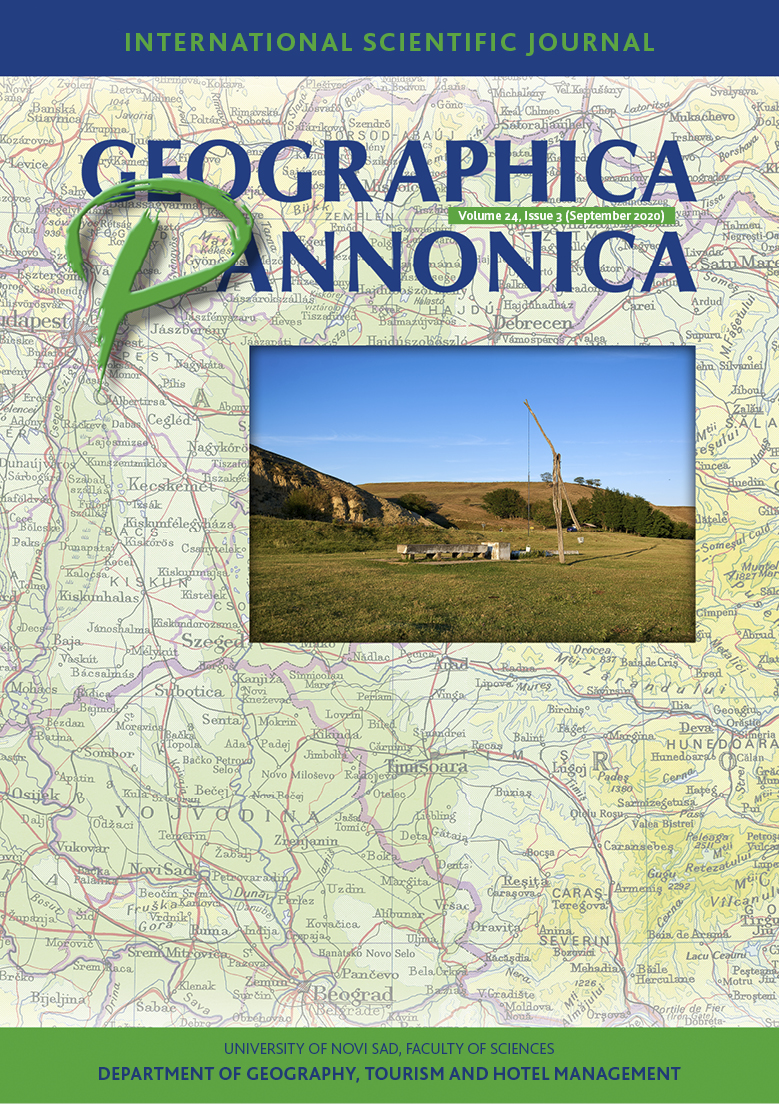Spatio-temporal Variations of Tropospheric Nitrogen Dioxide in Turkey Based on Satellite Remote Sensing
Abstract
The satellite observations of NO2 acquire the total tropospheric column over an area while the current ground observations lack spatial and temporal coverage. In this study the Dutch Ozone Monitoring Instrument (OMI) NO2 (DOMINO) product for 2004 – 2019 period was used to analyze the spatial and temporal variations of NO2 in Turkey. Considering the seasonality characteristics of NO2, we have used pixel passed seasonal Kendall (S-K) test to investigate the trend of the change. The highest values of NO2 has been found at the metropolitan cities and perimeter of the high capacity power plants in the observed period. The monthly average concentrations of NO2 are higher in winter months due to the higher demand of heating and power usage. S-K trend test results indicate a statistically negative trend at the largest cities such as Istanbul, Ankara and Izmir. However statistically significant positive trend has been found in some areas and Syrian border provinces in particular. Our results show that there is an abrupt change by 2011 in the tropospheric NO2 concentrations, same period when the first Syrian refugees have arrived after the political disorder. The dramatic change at the emission landscape of the NO2 in the region can be attributed to the rapid increase in the number of refugees and increased anthropogenic activity.
References
Boersma, K. F., Eskes, H. J., Dirksen, R. J., van der A, R. J. J., Veefkind, P., Stammes, P., Huijnen V., Kleipool Q. L., Sneep M., Claas J., Leitão J., Richter A., Zhou Y. & Brunner D. (2011). An improved retrieval of tropospheric NO2 columns from the Ozone Monitoring Instrument. Atmospheric Measurement Techniques, 4, 1905-1928.
Cai, K., Zhang, Q., Li, S., Li, Y., & Ge, W. (2018). Spatial–Temporal Variations in NO2 and PM2. 5 over the Chengdu–Chongqing Economic Zone in China during 2005–2015 Based on Satellite Remote Sensing. Sensors, 18(11), 3950.
Castellanos, P., & Boersma, K. F. (2012). Reductions in nitrogen oxides over Europe driven by environmental policy and economic recession. Scientific Reports, 2, 265.
Crippa, M., Guizzardi, D., Muntean, M., Schaaf, E., Dentener, F., van Aardenne, J. A., Monni S., Doering U., Olivier J. G. J., Pagliari V. & Janssens-Maenhout, G. (2018). Gridded emissions of air pollutants for the period 1970–2012 within EDGAR v4. 3.2. Earth System Science Data, 10(4), 1987-2013.
Directorate General for Migration Management (2019) https://en.goc.gov.tr/ , last access (December 2019)
Hirsch, R. M., Slack, J. R., & Smith, R. A. (1982). Techniques of trend analysis for monthly water quality data. Water Resources Research, 18(1), 107–121.
Irie, H., Muto, T., Itahashi, S., Kurokawa, J. I., & Uno, I. (2016). Turnaround of tropospheric nitrogen dioxide pollution trends in China, Japan, and South Korea. Sola, 12, 170-174.
Kendall, M. G. (1975). Rank Correlation Methods. Griffin, London, UK.
Kharol, S. K., Martin, R. V., Philip, S., Boys, B., Lamsal, L. N., Jerrett, M., Brauer M., Crouse D.L., McLinden C. & Burnett, R. T. (2015). Assessment of the magnitude and recent trends in satellite-derived ground-level nitrogen dioxide over North America. Atmospheric Environment, 118, 236-245.
Leghtas I. & Hollingsworth A. (2017) “I am only looking for my rights” - Legal employment still inaccessible to refugees in Turkey, Refugees International Report.
Lelieveld, J., Beirle, S., Hörmann, C., Stenchikov, G., & Wagner, T. (2015). Abrupt recent trend changes in atmospheric nitrogen dioxide over the Middle East. Science Advances, 1(7), e1500498.
Mann, H. B. (1945). Nonparametric tests against trend. Econometrica: Journal of the Econometric Society, 245-259.
Ministry of Environment and Urban Planning. (2009). Regulation on the control of industrial air pollution Turkey, https://cygm.csb.gov.tr/yonetmelikler-i-440 , last access (January 2020).
Özdemir, E. (2017). Suriyeli Mülteciler Krizinin Türkiye’ye Etkileri. Uluslararası Kriz ve Siyaset Araştırmaları Dergisi, 1(3), 114-140. (in Turkish with English summary)
Özden, S. (2013). Syrian refugees in Turkey. Migration Policy Centre, MPC Research Report, 2013/05.
Pettitt, A. N. (1979). A non-parametric approach to the change-point problem. Journal of the Royal Statistical Society: Series C (Applied Statistics), 28(2), 126-135.
Richter, A., Burrows, J. P., Nüß, H., Granier, C., & Niemeier, U. (2005). Increase in tropospheric nitrogen dioxide over China observed from space. Nature, 437(7055), 129.
Saini, R., Satsangi, G. S., & Taneja, A. (2008). Concentrations of surface O3, NO2 and CO during winter seasons at a semi-arid region–Agra, India. Indian Journal of Radio & Space Physics, 37(2), 121-130.
Schneider, P., & van der A, R. J. (2012). A global single‐sensor analysis of 2002–2011 tropospheric nitrogen dioxide trends observed from space. Journal of Geophysical Research: Atmospheres, 117(D16).
Sen, P. K. (1968). Estimates of the regression coefficient based on Kendall's tau. Journal of the American statistical association, 63(324), 1379-1389.
Van Der A, R. J., Eskes, H. J., Boersma, K. F., Van Noije, T. P. C., Van Roozendael, M., De Smedt, I., Peters D. H. M. U. & Meijer, E. W. (2008). Trends, seasonal variability and dominant NOx source derived from a ten year record of NO2 measured from space. Journal of Geophysical Research: Atmospheres, 113(D4).
WRI. (2019). World Resources Institute, Global Power Plant Database, http://datasets.wri.org/dataset/globalpowerplantdatabase , last access (December 2019)
Xiao, Z., Jiang, H., Song, X., & Zhang, X. (2013). Monitoring of atmospheric nitrogen dioxide using Ozone Monitoring Instrument remote sensing data. Journal of Applied Remote Sensing, 7(1), 073534.

